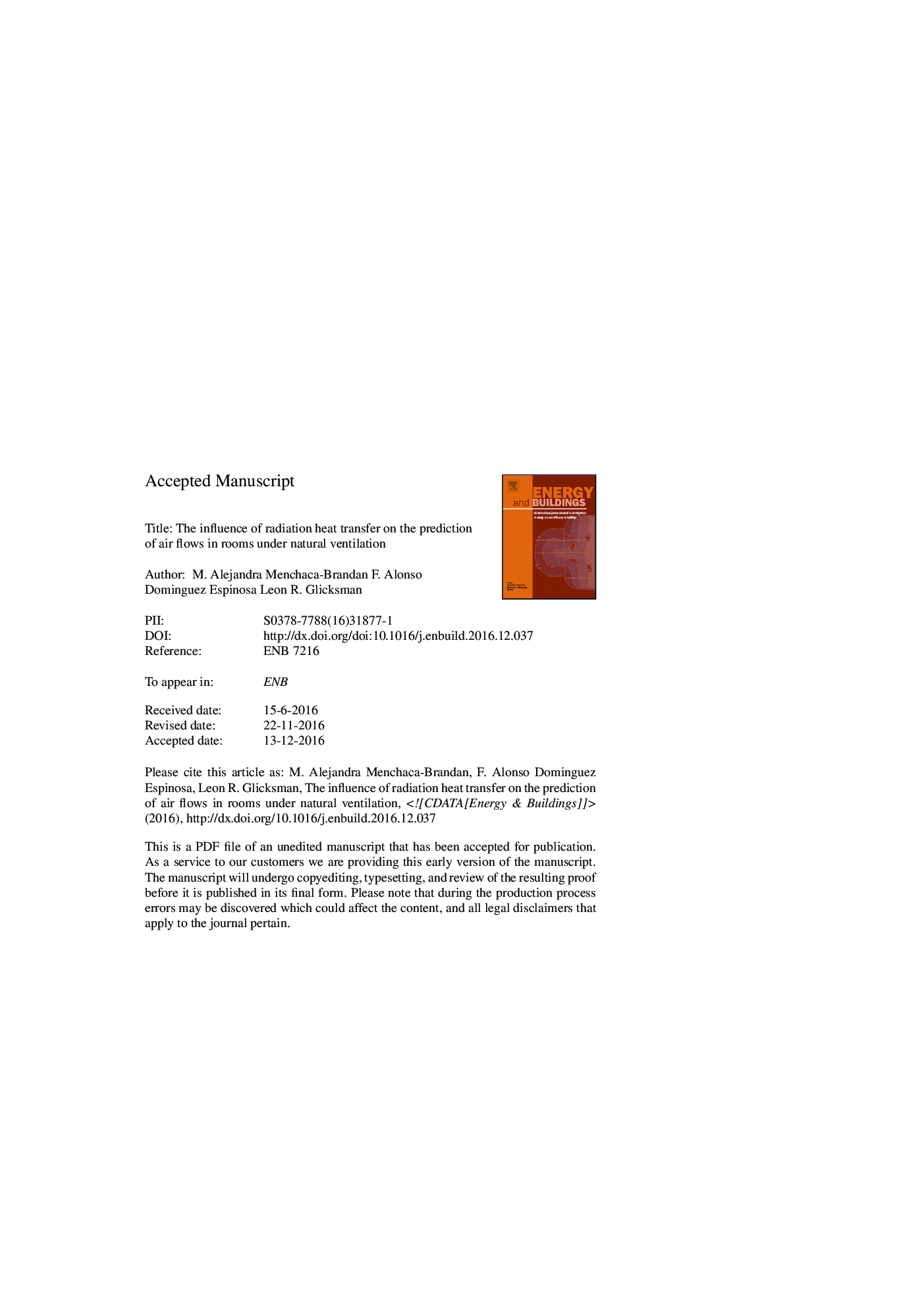| Article ID | Journal | Published Year | Pages | File Type |
|---|---|---|---|---|
| 4919461 | Energy and Buildings | 2017 | 12 Pages |
Abstract
Scale experiments that use water of different salinities to represent air at different temperatures are a common tool used to investigate room air ventilation. However, it has been shown that these experiments cannot replicate the effects of radiation heat transfer in a room. This paper illustrates the importance of accounting for radiative effects when modeling airflow, especially regarding the air temperature profile. Computational fluid dynamics simulations were performed of flow in heated rooms with and without radiation. It was found that when radiation was ignored the temperature of the air surrounding the occupants was significantly lower, by 2-4 °C, than when including its effects. In addition, the surface temperature of the heat sources was consistently higher (up to 17 °C) when ignoring radiation. Finally, air velocity in the space was higher in simulations that included radiation. These differences have an important impact on the predicted thermal comfort of the occupants, since neglecting radiative heat transfer would result in an inaccurate estimation of operative temperature. We conclude that water scale models do not provide an accurate description of flow behavior in a space, so desired thermal and flow conditions might not be achieved in buildings designed or assessed using water scale models. For these reasons, theoretical models or computer simulations that omit radiation will also give misleading predictions of room temperature distribution.
Related Topics
Physical Sciences and Engineering
Energy
Renewable Energy, Sustainability and the Environment
Authors
M. Alejandra Menchaca-Brandan, F. Alonso Dominguez Espinosa, Leon R. Glicksman,
